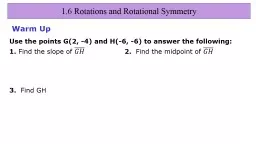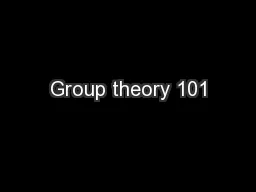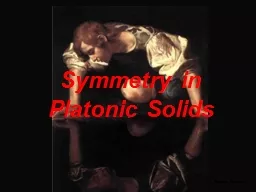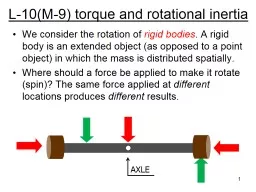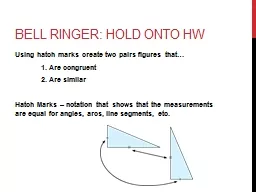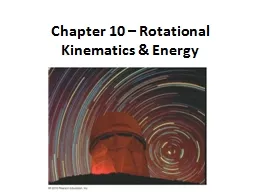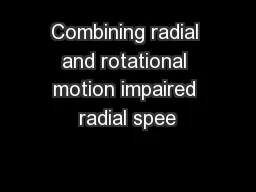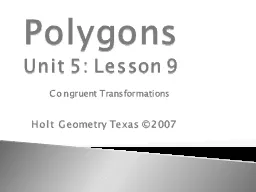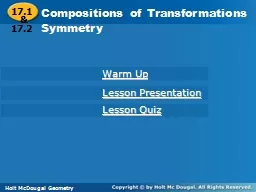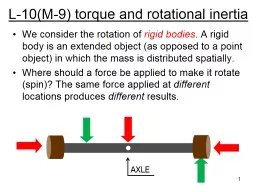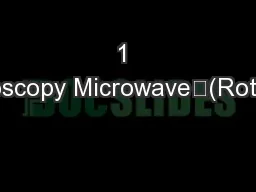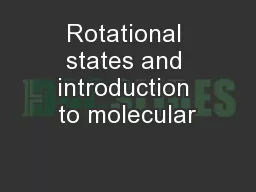PPT-1.6 Rotations and Rotational Symmetry
Author : debby-jeon | Published Date : 2016-07-06
U se the points G2 4 and H6 6 to answer the following 1 Find the slope of 2 Find the midpoint of 3 Find GH Warm Up Objectives Identify and draw rotations
Presentation Embed Code
Download Presentation
Download Presentation The PPT/PDF document "1.6 Rotations and Rotational Symmetry" is the property of its rightful owner. Permission is granted to download and print the materials on this website for personal, non-commercial use only, and to display it on your personal computer provided you do not modify the materials and that you retain all copyright notices contained in the materials. By downloading content from our website, you accept the terms of this agreement.
1.6 Rotations and Rotational Symmetry: Transcript
Download Rules Of Document
"1.6 Rotations and Rotational Symmetry"The content belongs to its owner. You may download and print it for personal use, without modification, and keep all copyright notices. By downloading, you agree to these terms.
Related Documents

